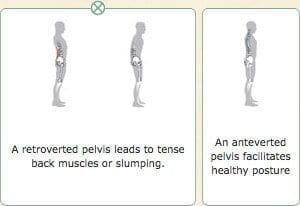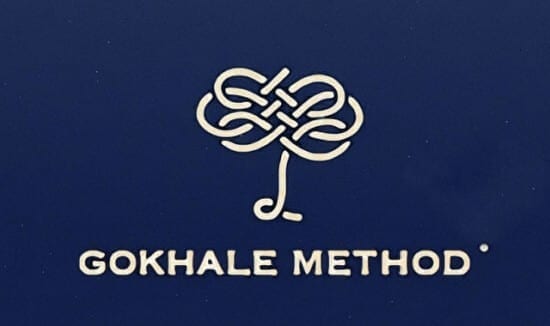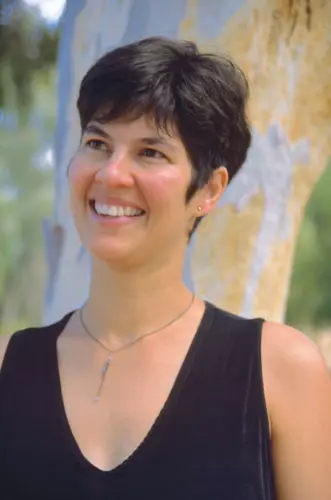By Esther Gokhale, LAc and Diana Moll, LAc
One of the four categories of examination in Chinese medicine is the “looking diagnosis”. Observing the patient’s skin tone, the Shen in the eyes, and checking the tongue are all elements of creating a clear, effective diagnosis. Observing posture can add a layer to the examination that is insightful, especially given the frequent occurrence of postural distortion in modern times.
We can start looking at our patients as soon as we greet them in the waiting room. How do they sit, stand, and walk? What kind of posture do they have? Instinctively, many of us sense that a slouching or hunching patient has a qi deficiency. There is not sufficient qi to be truly upright. The opposite can be true as well: poor posture can cause qi deficiency. Both can be simultaneously true, giving rise to a vicious cycle—but it’s a vicious cycle that can be broken.
The Gokhale Method: Aligning Bones for Qi Flow
Treating a low energy patient can produce results, but not always lasting ones if poor posture is involved. Needling, stretching, or movement on the channel path invigorates the qi, removing stasis and opening energetic blockages. However, a static distortion of the yin, the hard part of the body and the bones, creates a deeper blockage. In ancient China, the branch of Chinese medicine we call ‘Tui Na’ included bone medicine, the manipulation of the skeleton. Aligning the bones is important to the qi flow. Every skeletal muscle originates and inserts on bone. A bone that is out of healthy alignment will stress the muscles and accompanying channels. Additionally, qi tends to stagnate in the joints; a poorly articulated skeletal structure is one that is at risk. The Gokhale Method restores the correct alignment of the bones in ways based on anthropological, historic, and anatomical findings, as well as empirical experience.
Impact of Posture on Meridians and Qi Flow

Slouching and hunching deform the spine into a C shape. When a person attempts to correct the slouching C incorrectly, the result is an S shaped spine. Both these postures are inefficient. The muscles of the neck, shoulders, and upper back are continuously engaged to keep the poorly balanced head from falling forward. All the channels that traverse the torso, front, and back, will also be somewhat compromised because of the stress on the muscular and skeletal systems. An I-shaped spine, common in older people, also compromises the channels. Here, there is a loss of height with chronic compression, which shows up as long-term stagnation, degeneration, and calcification.
Taking into consideration the symptoms and channel pathways, the Du and the Ren channels are the most relevant. These two Extraordinary Meridians serve as reservoirs of the qi and regulate the flow of energy for the twelve regular meridians. Judged by some to be branches of the same Extraordinary Meridian, the Du and the Ren share a common origin: the Kidneys. In both the C spine and the S spine, the area of the Kidney Shu, UB23, is distorted. In the C spine there is tense convexity and in the S spine there is concavity. It is reasonable to conjecture that the Kidneys are weakened or inaccessible due to the hindrance of UB23. Although there are many powerful and interesting points on the Du and the Ren Channels, two are most associated with low energy and are paired closely anatomically front and back: Du 4 and Ren 6.
Du 4 is located between the 2nd and 3rd lumbar vertebrae. The lumbar vertebrae at their points of articulation are flat and their corresponding disc is flat too. A chronic bend in the lumbar spine posteriorly (C spine) or anteriorly (S spine) compromises the L2-L3 disc and distorts the space between the vertebrae. Any physical anomaly along the path of the channel can be a problem–a scar or even a tattoo can cause a significant disruption. A constantly compromised bone space where a major acupuncture point lies will surely undermine the function of that point. Du 4 (Mingmen, “The Gate of Life”) has many actions and uses depending on the source consulted. In brief, Du 4 can be used to strengthen Yuan Qi and Kidney Yang Qi for chronic physical and mental weakness. Likewise, its impairment can contribute to these conditions.
The impairment of Ren 6 (Qihai, “Sea of Qi”) by posture, though not as direct as in the case of Mingmen, is still noteworthy. Located 1.5 cun below the navel on the midline, Qihai, like Mingmen, is closely associated with the Kidneys. In the case of a C spine, the area around Qihai in the lower abdomen is compressed as well as constricted by the ribs curving inward. The qi pools in the belly, unable to circulate and rise, and Dampness accumulates. When the spine has an S shape, the lumbar vertebrae sway, the abdomen is stretched tight, and circulation of blood and qi are compromised. Association compromises Qihai. Optimally, the belly is relaxed, facilitating free flow. Clinically, Qihai, especially through the use of moxa, powerfully tonifies qi and yang for physical and mental exhaustion. It lifts qi and relieves stagnation. In low energy patients with impairment at Qihai, these attributes are clearly lacking.
Are you interested in becoming a certified acupuncture professional?
Visit the links below to explore our specialized acupuncture programs at a campus near you:
Integrating the Gokhale Method in Traditional Chinese Medicine
If the C and S spine shapes compromise meridians, points, and the energy system as a whole, what is the solution? The Gokhale Method proposes the J spine.This functional shape is found in our ancestors, very young children and pre-industrial peoples (see image).The Gokhale Method describes the J spine being characterized by an anteverted pelvis, elongated and not very curved lumbar, thoracic and cervical contours, chin angled slightly down, and shoulders aligned along the posterior part of the torso. It has some similar criteria to Qi Gong and Tai Chi postures.
The lifting of the Jade Pillow also angles the chin and elongates the neck. Hanging the spine “like a string of pearls” straightens and lengthens the spine. Some styles teach a tucked or retroverted pelvis, which straightens the lumbar vertebrae and opens the Mingmen area, both criteria of the J spine. However, due to the wedge-shaped nature of the L5/S1 disc, tucking is not a realistic long-term solution that can be used throughout the day without damage to the disc.
Moreover, tucking is not seen in the demographic of naturally healthy backs. An overly tucked pelvis inhibits gluteus action, leaving movement up to the quadriceps and the psoas. The Gokhale Method does emphasize straightening the lumbars, but this is achieved by rotating the ribcage forward to lengthen and stack the lumbars. The shoulders are then migrated back along the torso with a shoulder roll to correct any hunching that the forward rotation of the ribcage reveals.
In the case of the C spine, the Gokhale Method remedy is to un-tuck and antevert the pelvis. In many cases, simply changing the position of the pelvis will adequately influence the rest of the torso. Pelvis anteversion alone addresses some of the issues of the low energy patient with compromised function of Qihai. When the pelvis is anteverted, the pubic bone supports the organs of the lower abdomen. This positioning helps in cases of prolapse of the bladder or the uterus. Qihai is used in combination with Du20, Baihui, for prolapse. Qihai is used to relieve stagnation of the intestines. With the retroverted pelvis of the C spine, the intestines simply don’t have enough room and become stagnant. An anteverted pelvis allows for an estimated third more space for the intestines and organs of the lower abdomen. After learning pelvic anteversion, Gokhale Method students report seeing improvements with irritable bowel syndrome, constipation, menstrual cramping and bloating, prostrate problems, and fertility issues.
The S spine presents with a significant sway. The sway is remedied by rotating the ribcage forward. This is followed with shoulder rolls, one at a time, aligning the shoulders toward the posterior of the torso. Elongating and bringing the neck back into alignment with the spine puts a student well on her way to having a healthier upper body structure. Often, after the sway has been addressed, the pelvis will need to be corrected into anteversion.
These posture corrections can be reinforced through Gokhale Method’s Stretch sitting and Stretch lying, which focus on lengthening the lumbar area. It is through correct and gentle lengthening and reshaping that the patient achieves a healthy “default” posture, where every bone is in its natural place (see image of 2 spines). Like with any self-cultivation system, practice and diligence are helpful, but nature is our ally and where we are going is home.
Featured Posts:

